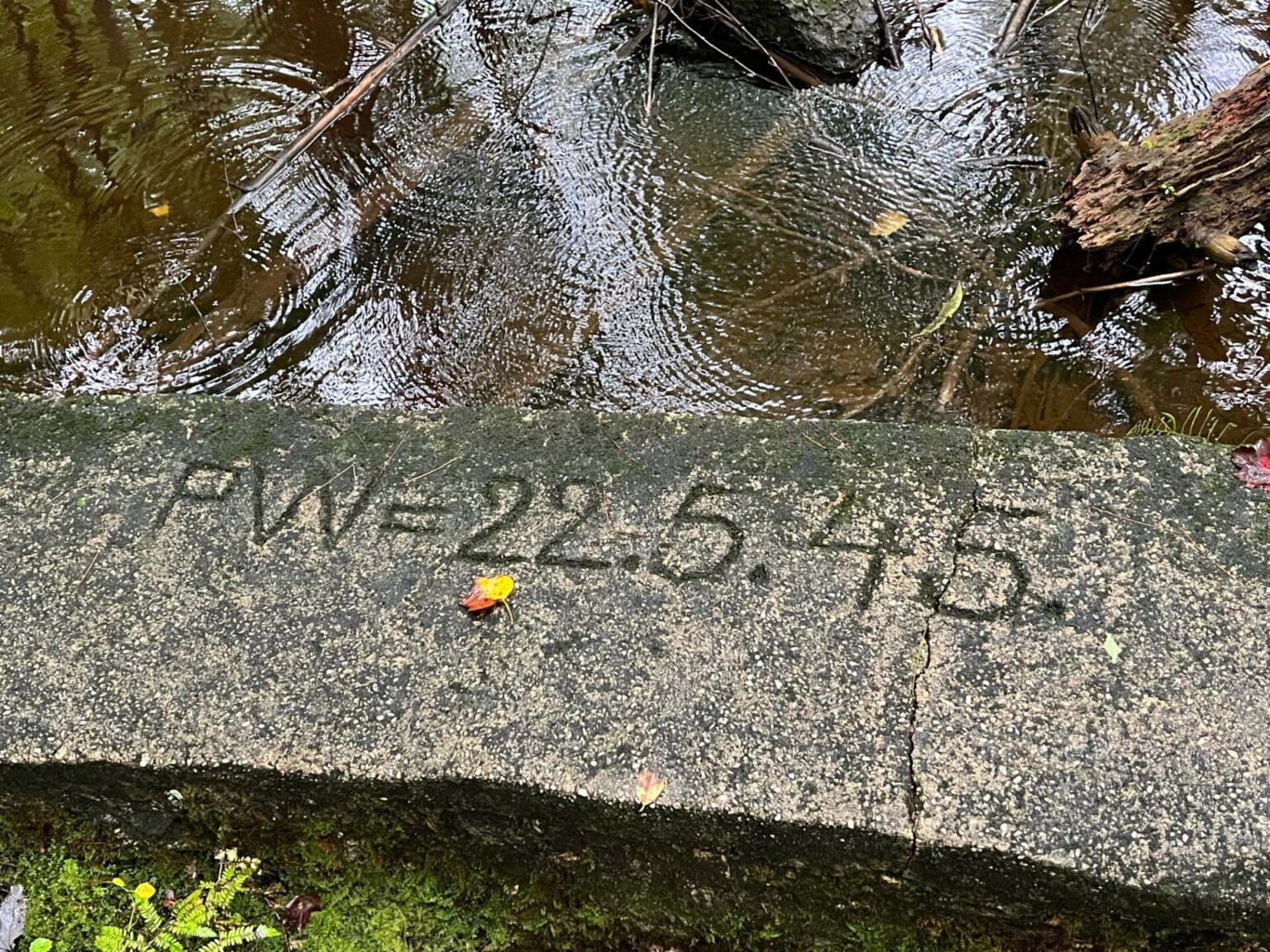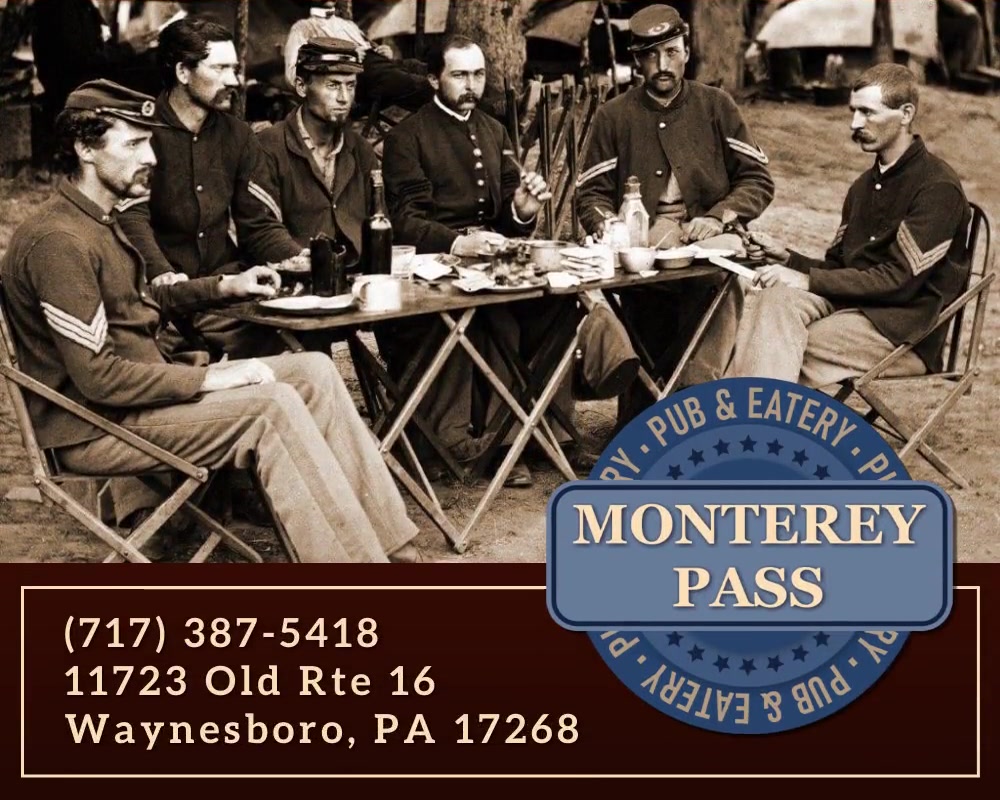When World War II’s history is contemplated, most minds travel back in time to the Pacific theatre or battlefields in Europe. But on rare occasions, past world events weave their way into local landscapes. Relics can be discovered in Pennsylvania; hints from tumultuous war years between the Pearl Harbor attack in 1941 and the first atomic bomb blast in 1945.
The Pine Grove Furnace Prisoner of War (POW) Camp in Cumberland County is a place to re-examine that history. This military installation was once utilized to interrogate German and Japanese prisoners between 1943 and 1945, one of three such secret locations on American soil. United States Military Intelligence sought information from prisoners regarding Axis war operations and their development of new weaponry.
Prisoners were interviewed in soundproof rooms and Germans vastly outnumbered Japanese military. One estimate reports 7313 Germans arrived at the camp but only 161 Japanese. Were American attempts to extract information successful? Due to the clandestine nature of the operation, the answer remains a mystery.
Long before the POW Camp was conceived, this scenic property was Bunker Hill Farm for over a century, with ties to the iron industry. Nearby Pine Grove Furnace was a place where that metal was charcoal-fired in a massive stone furnace.
Also prior to becoming a POW facility, this site also was also a Civilian Conservation Corps camp during the 1930s, serving as a base for workers who built or expanded local trails, parks, and shelters.
For the curious interested in exploring this former POW Camp, it’s located only a few miles north of Caledonia State Park. Starting from Caledonia, drive north on PA Route 233 toward Pine Grove Furnace. Approximately 12 miles from Caledonia, make a left onto Michaux Road. This turn is reached before Pine Grove Furnace State Park. A Pennsylvania Historical Marker marks this location.
Drive on Michaux Road about 1.4 miles. Turn onto the first right, Bunker Hill Road, then immediately park on the left. There is an interpretive kiosk at this parking area that typically offers walking tour copies prepared by the Cumberland Valley Historical Society. To be safe, prior to a visit download their walking tour to a smart phone or pre-print the POW site information using this link: https://www.historicalsociety.com/wp-content/uploads/2019/10/CampMichauxInteriorWeb.pdf
After parking, walk across Michaux Road to the wooden gate to start the walking tour. The POW exploration trail is mostly level and less than two miles in length. At this gate, a historical marker provides a synopsis of the camp’s history.
When starting the tour, a few steps past the wooden gate, look to the right for these ruins: steps leading to a vanished building.
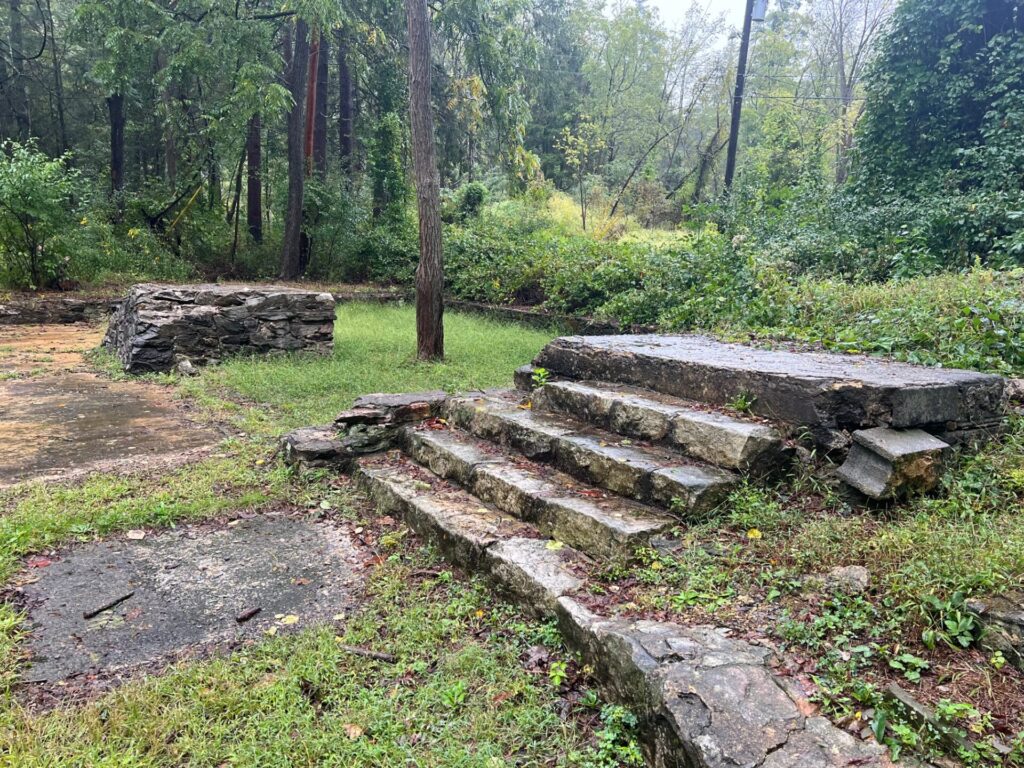
Next, stroll a quarter-mile and look again to the right to view one of the most striking artifacts on the property: a fountain that looks ready to be refilled and begin bubbling. The rustic stonework is beautifully preserved, a relic that harkens back to the work of Depression-era artisans.
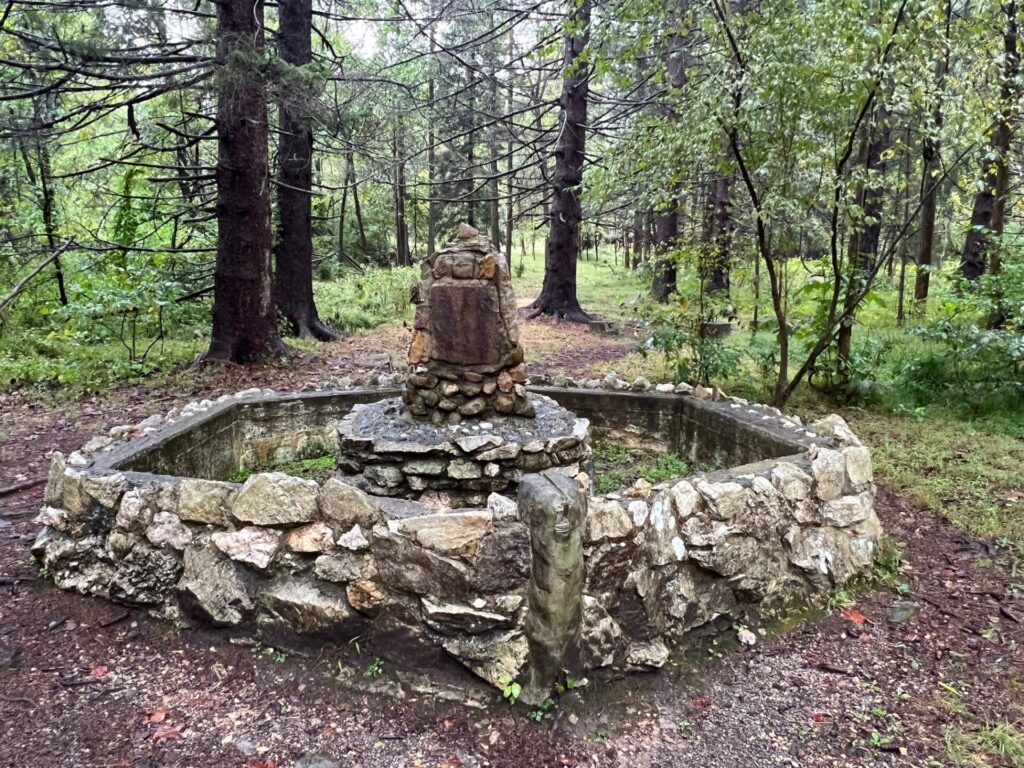
Uphill of this fountain, four corner remnants of a guard tower are seen.
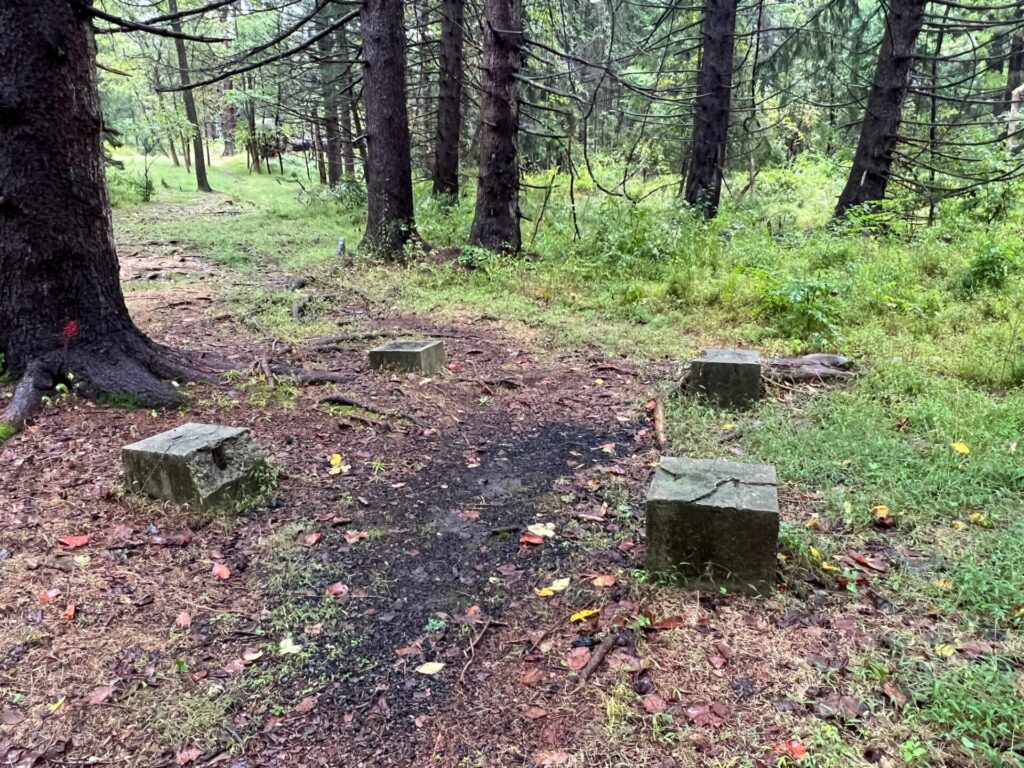
Return to the fountain and rejoin the original road. Continuing a short distance, an impressive foundation appears on the right, but there are few clues to this structure’s original purpose. A tree escapes one side of this derelict building.
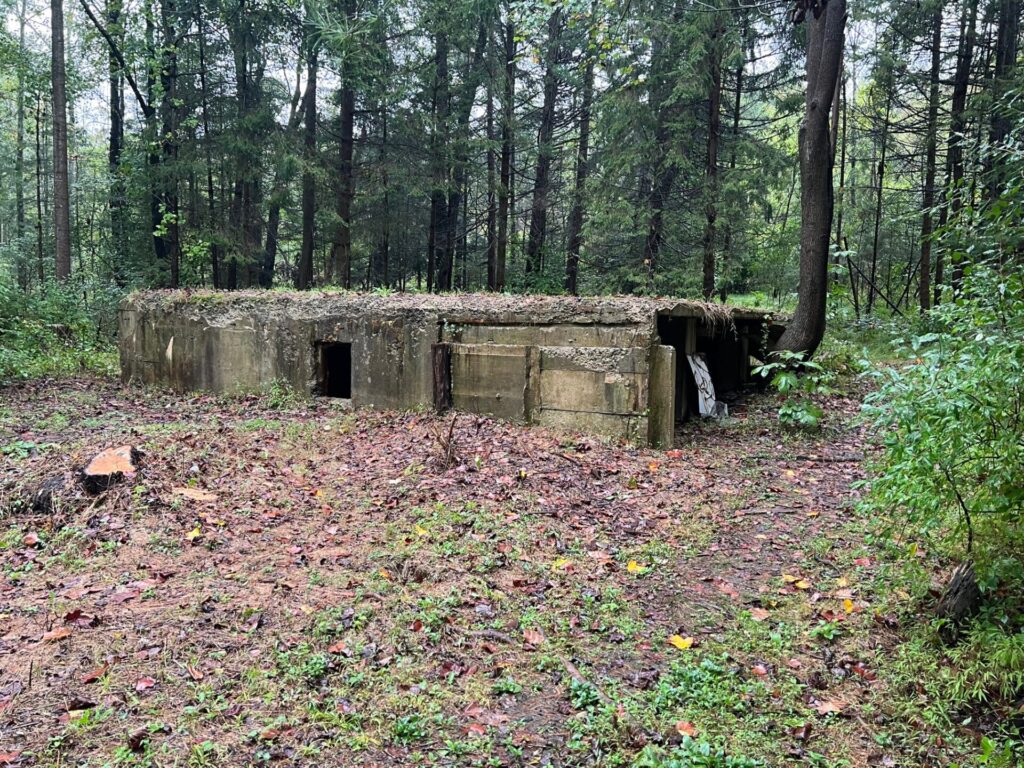
Continue past this mystery foundation and look for Tour Marker 19. Ahead, the trail will gradually shift to the left, downhill towards Toms Run, where a concrete dam impounds the creek. Here, water spills downward in a scenic cascade.
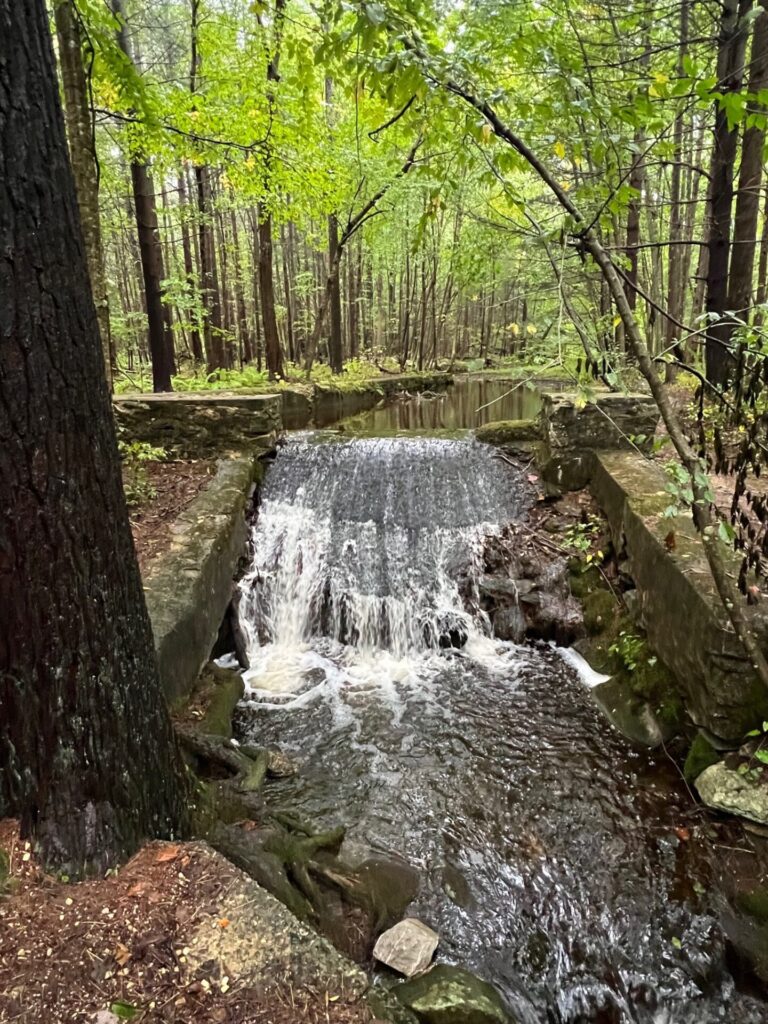
Cross a wooden bridge and walk along the left concrete wall of the impoundment. This is a favorite spot in the entire POW camp. I’ve stood here and traced the concrete etching with my fingers.
In 1945, news of Germany’s defeat would have raced through the POW Camp. On this wall, a German prisoner of war scratched “PW 22.5.45” into wet concrete on May 22, 1945, nearly 80 years ago. The war in Europe was over and this prisoner likely realized he had survived.
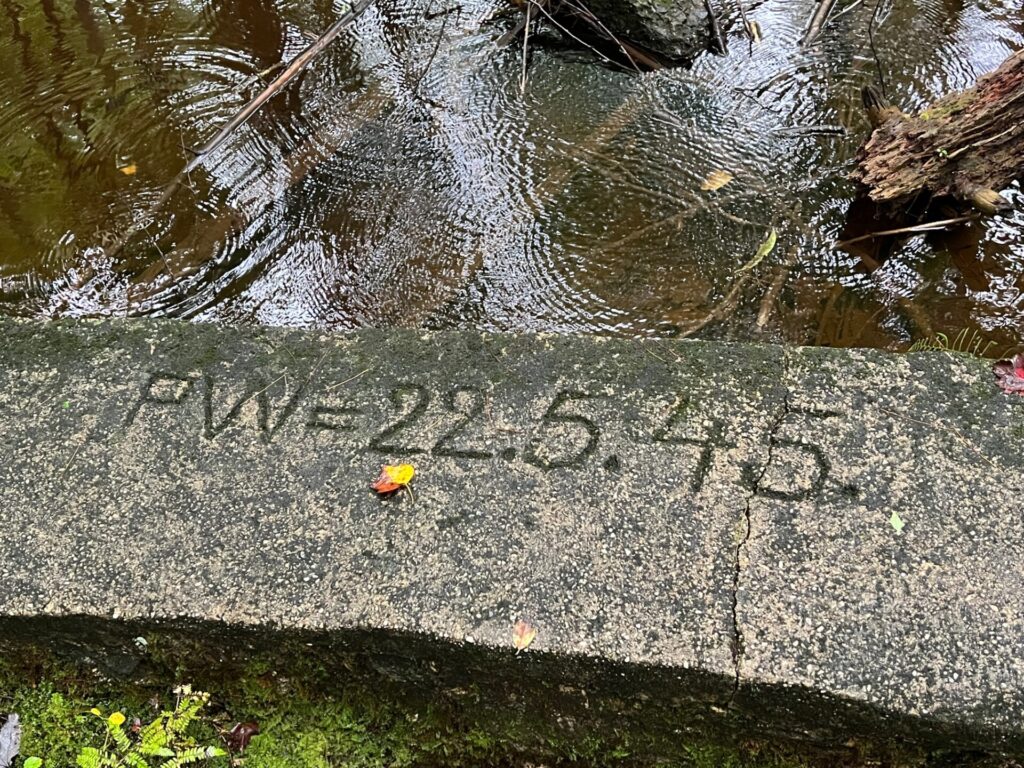
After the war, a church camp was established here in 1946, a cooperative effort between the United Church of Christ and the United Presbyterian Church that lasted until 1972. The old POW camp is now preserved inside Michaux State Forest’s boundaries.
This entire POW Camp is a protected archeological site. Relic hunting, metal detectors, and digging are prohibited. But curious deer and honeysuckle fruits are free to see and enjoy.
In addition to the previously mentioned Cumberland Valley Historical Society website, for more history about this former POW Camp, visit this online site: https://www.schaeffersite.com/michaux/history-dave-smith.htm
For further exploration of this scenic area, Pine Grove Furnace State Park and the surrounding area are pleasant additions to any road trip. The 2000-mile Appalachian Trail marks its middle point nearby. A traditional challenge for thru-hikers celebrating this prominent spot is to eat an entire half-gallon of ice cream at a local General Store.
Nearby Caledonia State Park is another gem in Pennsylvania’s State Park system with beautiful forests, streams, and hiking trails.
The remains of Pine Grove Furnace POW Camp are a reminder of World War II’s legacy. Enemy soldiers were held captive and interrogated here, to aid American efforts in defeating brutal German and Japanese regimes. These ruins still hint at those historic times eight decades later.
This article and photos were produced by Gary Bruner. If you know of local history you would like to share, LocalNews1.org invites you to send your stories to [email protected].


